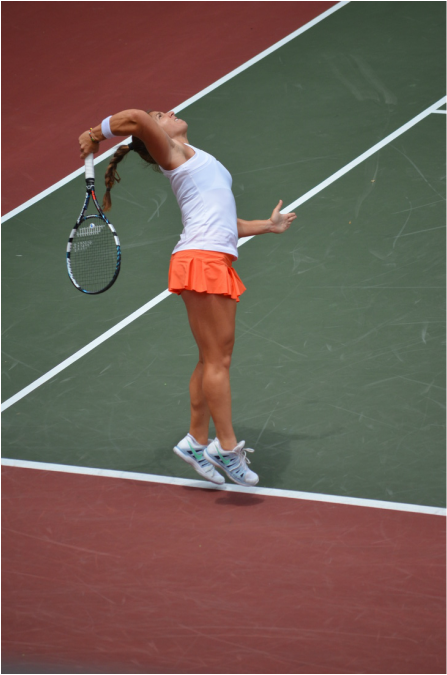1. Get Assessed
Tennis players are so quickly to judge themselves on their performance on the court, but when it comes to the other major parts of the game: hydration, nutrition and physical preparedness, often times that falls to bottom of the priority list. A fitness assessment is a benchmark for any athlete not only to determine strengths and problem areas, but also set realistic goals. 2015 became the year of the wearable in all sports. From GPS tracking technology to heart rate monitoring these are all great tools to track day-to-day progress.
2. Develop a proper warm-up
There are endless resources and videos about everyone creating the most efficient warm-up for the general athlete. How many times have we looked at the process and thought is this specifically working for me? Even worse than that is the amount of times I have seen high performance athletes do the bare minimum before going out on court right into point play. No matter what the level is, as athletes we have to take the time to find out what our needs are and more specifically target those areas before going out on court. Looking at the most common injuries in tennis is one great way to start. Narrowing the focus on those exercises and other common problem areas will at least give the athlete something to build from. Athletes should have a go-to warm-up that they have memorized or that is kept in their bag, but also what I like to call the “worst- case scenario” warm-up. This is the warm-up for those tournaments where you have to get ready in the parking lot, or are sitting around for that long rain delay without much notice of when play will resume. All will be effective tools in the long run for any athlete to possess if they want to take their game to the next level.
3. Trust the process
Athletes just like the average public sometimes fall into the habit of looking for immediate success. The relationship between the tennis athlete and coach is often one of the most intense of any sport. This alludes to why it is no surprise that the turnover rate between players and coaches in the sport of tennis is so high. So what do we learn from this? For one, find the coach that understands your goals. Second, trust their craft and the time it takes for the body to adapt to certain changes. Lastly, it is toxic for athletes to compare themselves to others when everyone has been on a different journey for different lengths of time.
If we are to make resolutions, let this be the year that we are at least committing to be the best that we have ever been on and off the court.





 RSS Feed
RSS Feed
